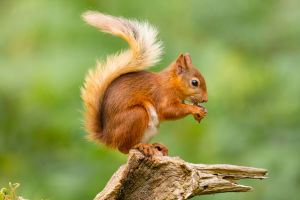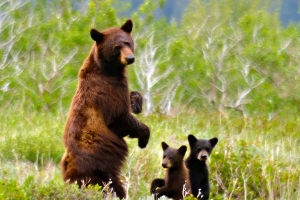When we think of freezing places like Antarctica or the Arctic, we imagine icy winds, endless snow, and temperatures that can drop far below zero. It's hard to believe any living creature could survive out there.
But amazingly, many animals not only survive—but actually thrive—in these icy environments. Let's discover who these cold-climate champions are and how they manage to stay warm when the world around them freezes.
Penguins: masters of team warmth
Down in Antarctica, penguins—especially Emperor Penguins—show us the power of teamwork. During the brutal Antarctic winter, temperatures can drop to -60°C. To survive, penguins huddle together in large groups, taking turns on the cold outer edge and then moving into the warm center. Their feathers are tightly packed, waterproof, and backed by a thick layer of blubber to help them stay cozy in freezing winds and snow.
Arctic foxes: dressed for the season
The Arctic fox is a small but clever animal that changes its look with the seasons. In winter, its fur becomes thick, white, and fluffy, blending in with the snow and offering excellent insulation. Arctic foxes also wrap their bushy tails around themselves like a scarf when they rest. Their compact body shape helps them conserve heat, and their paws are covered with fur to walk easily on ice and snow.
Snow leopards: high-altitude survivors
Living in the cold mountains of Central Asia, snow leopards have adapted to cold, rocky terrain. Their thick fur keeps them warm at high altitudes, and their wide, furry paws work like snowshoes. A long tail helps with balance and also serves as a blanket when they curl up to sleep. These solitary hunters are incredibly stealthy and can thrive even in remote mountain regions where food is scarce and temperatures are low.
Caribou: always on the move
Caribou, also known as reindeer, live in the snowy forests and tundras of the north. Their thick coats are made up of hollow hairs that trap heat. Even their noses are special—they warm up the freezing air before it reaches their lungs. Caribou are constantly moving in search of food like moss and lichen, and their large hooves help them walk through deep snow and even dig for buried food.
Wood frogs: frozen but not dead
Now here's a shocking one—wood frogs can survive being frozen! In North America, these frogs go into a kind of natural "pause mode" during winter. Ice forms in their bodies, their hearts stop beating, and they appear dead. But thanks to a natural sugar in their cells that protects them, they thaw out and hop away when spring returns. Nature's very own "freeze and revive" trick!
How do they all do it?
Surviving extreme cold isn't just about thick fur or lipids layers. These animals use a mix of smart behaviors, body changes, and teamwork to live through the coldest months. Some migrate, some hibernate, and some just tough it out. Over time, their bodies have evolved in amazing ways to handle freezing temperatures that would leave most animals helpless.
Nature's icy inspiration
Learning about how animals survive in extreme cold reminds us how powerful and adaptable life can be. Whether it's the teamwork of penguins or the quiet strength of a snow leopard, these creatures show us that survival is about more than just staying warm—it's about clever design and smart choices.
Which icy animal amazed you the most?
Have you ever seen one of these winter survivors in a documentary or at the zoo? Which one would you like to learn more about? Let us know—we'd love to hear what surprised or impressed you most! The frozen world may seem lifeless, but as we've seen, it's full of extraordinary life.


